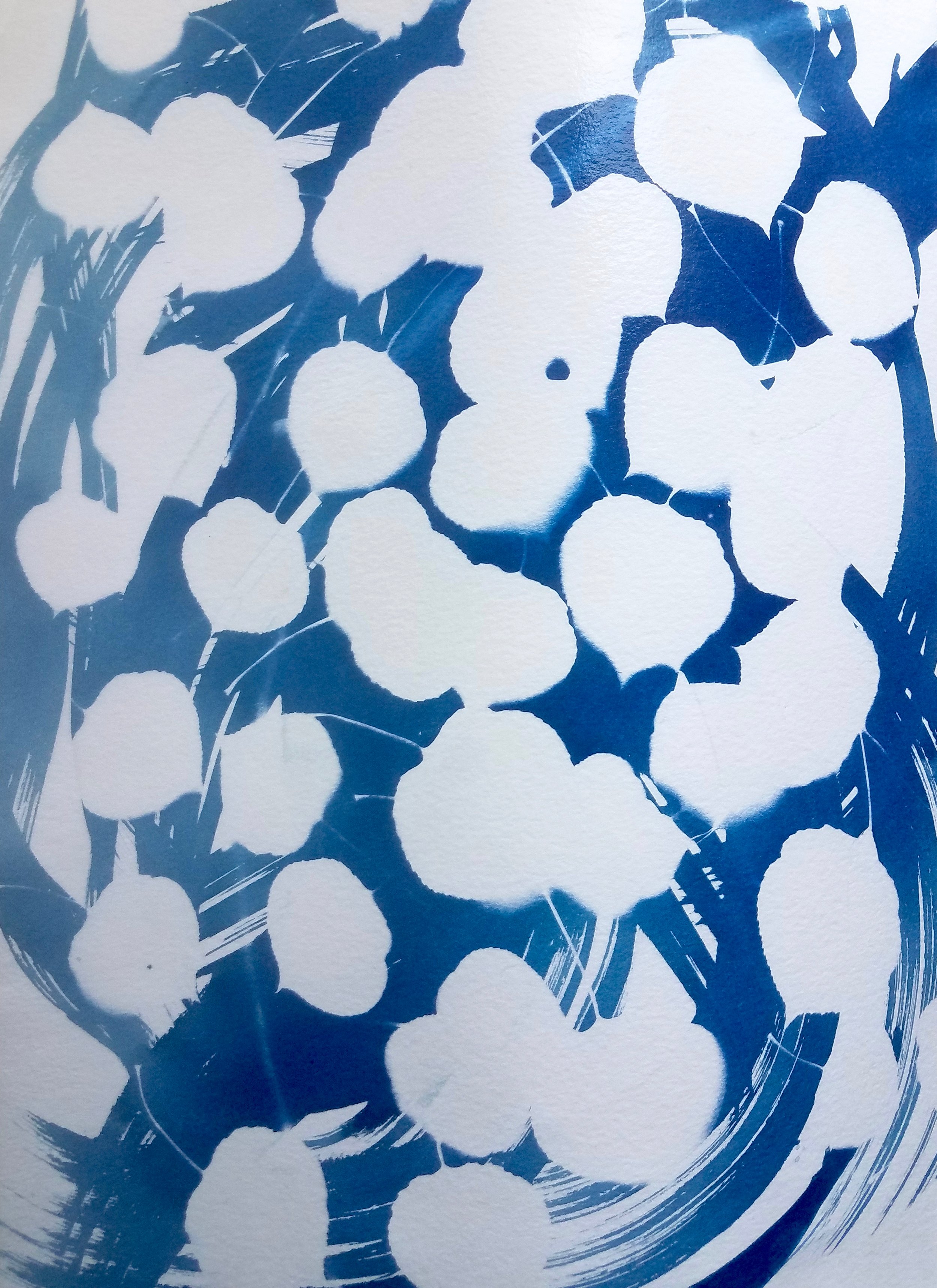What is a Cyanotype?
Cyanotype is an accessible, nontoxic photographic printing process first used in 1842. It produces prints in a distinctive dark turquiose-blue. The word “cyan” comes from the Greek, meaning “dark blue substance.” Compared to other photographic printing processes, cyanotype is relatively easy, inexpensive and nontoxic. No darkroom is needed, instead it uses the power of the sun and iron salt solutions rather than the silver salt solution of black and white photography; cyanotypes are often referred to as “sun prints.”
It’s Chemistry!
Ferric ammonium citrate and potassium ferricyanide solutions are combined, then exposure to UV light creates ferric ferrocyanide, a color also known as Prussian Blue (named for the color of the Prussian military uniforms.)
To make this light sensitive solution, two powdered chemical solutions are mixed separately with water:
1. 25 grams Ferric ammonium citrate (green) in 100 ml of water.
2. 10 grams Potassium ferricyanide in 100 ml of water.
The Process
The two solutions are then mixed in equal parts to create the third light-sensitive emulsion solution. This is then painted on one’s chosen substrate, usually paper or cloth, but it can be wood, egg shells, teabags (a personal favorite of mine!) - any receptive material. I’ve found that organic materials are most receptive to the emulsion, but the sky is the limit if you’re willing to experiment! It takes some practice to get it right – too thin a coat will not work, and too thick a coat will wash off and different thicknesses on different materials have different effects.
Once the chemicals are mixed together and you’ve applied the solution to your surface, this must be protected from UV light. Alternately, you can buy pre-treated Sun Print papers quite inexpensively (a super fun way to make this process accessible for kids and experimentation).
When you’re ready to create your cyanotype, gather the materials you will be placing on your paper, fabric or chosen coated material. Do this in an environment that is free from as much UV light as possible for best effect. Then place your piece in sunlight for several minutes; times vary with material, thickness of emulsion coating and intensity of the the sun/UV light. If there is some cloud cover exposure will be longer.
Once you’ve exposed your piece, submerge it in water and agitate and/or rinse it until the water runs clear. Then hang it or place it on a clean surface to dry. Your cyanotype is done!
A Brief History
The cyanotype process postdates the daguerreotype and calotype methods, but pre-dates the pioneering photographic methods of salt prints, albumen prints, ambrotypes and tintype processes.
The cyanotype process was invented in 1842 by Sir John Herschel (1792-1871), an English astronomer and scientist. (His father was the astronomer Sir William Herschel, who discovered the planet Uranus.) However, Herschel did not use cyanotype for photography, but for reproducing his astronomy notes. The cyanotype process was then popularized primarily for copying notes and creating copies of technical and architectural plans, which were called blueprints. Although the cyanotype process is no longer used to create them, any construction document or detailed plan is still referred to as a blueprint.
In 1843 Anna Atkins (1799-1871) , an English botanist and photographer, (and a friend of the Herschels) produced the first photographically illustrated book by using 421 cyanotype illustrations of seaweeds. Atkins named them ‘shadowgraphs’. The book was called British Algae: Cyanotype Impressions. She created the images by placing objects directly on photosensitive paper; this process is called a photogram. She is regarded as the first female photographer.
The New York Public Library has a good collection of Anna Atkins botanical cyanotype prints from John Herschel’s copy of her book. Some of these can be seen on http://www.flickr.com/photos/nypl/sets/72157610898556889/ and the complete set on can be accessed from http://digitalgallery.nypl.org/nypldigital/dgtitle_tree.cfm?level=1&title_id=100174.
This post was compiled from these links:
https://jennifereurell.wordpress.com/a-look-into-the-past/
https://blog.phillipscollection.org/2012/05/04/what-is-a-cyanotype/










